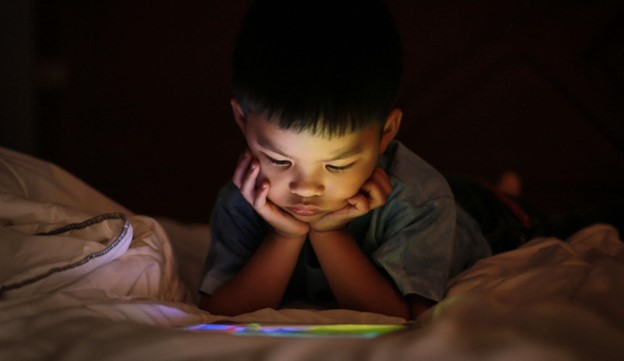
Striving to ensure your child embraces 21st-century technology while maintaining a healthy balance with screen time?
In today’s world, managing screen time for children is a pivotal challenge for parents. With technological advancements permeating every aspect of our lives, screens offer both educational opportunities and avenues for recreational activities. However, finding the right equilibrium between learning and leisure is essential for a child’s healthy development.
Age-Specific Recommendations
Firstly, let’s look at the Ministry of Health guidance on screen use in children.
- Children Under 18 Months: Zero Screen Time
The Singapore government emphasizes that children under 18 months old should avoid screen time altogether. This crucial period is characterized by rapid brain development, and interactions with caregivers play a pivotal role in nurturing foundational skills such as language acquisition, motor skills, and emotional development. Avoid your child using screens at all at this age, except for video calls with friends and family.
- Toddlers and Young Children (18 months to 6 years): Limited to One Hour Per Day
For children in the age range of 18 months to 6 years, the recommended screen time is limited to one hour per day. During this developmental stage, children are highly receptive to learning through interactive and engaging activities. While carefully curated and age-appropriate content can support their educational journey, excessive screen exposure may impede their social interactions and imaginative play, essential for holistic growth.
- School-Aged Children (7 to 12 years): A Reasonable Amount
As children progress into the age bracket of 7 to 12 years old, MOH suggests allowing a reasonable amount of screen time guided by a timetable to separate recreational screen time from screen activities that foster learning and development. At this stage, school-aged children are more capable of discerning between various digital contents and may benefit from technology for educational purposes. However, parental monitoring remains crucial to ensure a healthy balance between online activities and other developmental aspects such as physical exercise, social interactions, and creative pursuits.
It’s important to remember that this is just guidance provided by the government. Every child is unique and approaches should differ between children based on their unique abilities and personalities, and parents should assess screen time usage for their own children.

Strategies for Balancing Learning and Leisure Screen Time
Screens are unavoidable in the 21st century. From mobile phones to TVs, children will unavoidably use screens at various points, and these can be great learning and entertainment tools. Here are some strategies parents can use to balance childrens’ use of screen time between education and play:
- Set Clear Boundaries
Establishing clear and consistent rules regarding screen time is crucial. Communicate these guidelines effectively to your child, explaining the importance of a balanced approach to technology usage.
- Prioritize Quality Content
Emphasize high-quality, educational content when allowing screen time. Choose interactive programs or apps that encourage critical thinking, creativity, and skill development.
- Engage Together
Co-viewing or engaging in interactive activities with your child fosters bonding and allows you to guide and discuss content, enhancing their learning experience.
- Encourage Alternative Activities
Encourage and facilitate various non-screen activities like outdoor play, reading, hobbies, and family time to diversify your child’s experiences and interests.
- Model Healthy Behavior
Be a positive role model by demonstrating balanced screen habits yourself. Children often imitate parental behavior, so showcase responsible screen usage.

What Constitutes Educational Screen Time?
To achieve a balanced approach to screen time, consider exploring educational activities or classes that utilize screens as a tool for learning:
- Online Educational Platforms:
- Platforms offering interactive lessons in subjects like mathematics, language arts, science, and coding can be engaging and educational for children, for example Walnut Coding
- Language Learning Apps:
- Apps designed for language acquisition often employ gamification techniques, making learning enjoyable for kids while broadening their linguistic skills, for example KidStartNow
- Virtual Art or Music Classes:
- Screen-based art or music classes provide opportunities for creative expression and skill development through guided lessons and tutorials, for example Tree Art
- STEM-based Programs:
- Science, Technology, Engineering, and Mathematics (STEM) programs utilize screens to teach concepts, conduct experiments virtually, and foster problem-solving skills for example ICanCode Asia
- Educational Gaming:
- Some games are specifically designed to be educational, teaching various subjects or skills while entertaining children.

Finding the Balance for Your Child:
It’s important to note that the information provided here is just guidance. There are no specific rules about what you must and must not do with regards to screen time for your child, but for their best development it’s important to find a balance between using screens for recreational use and using them for educational purposes.
This balance will certainly shift depending on the age of the child and their natural affinity towards different learning styles. There are lots of ways to use screens for educational purposes for children, including online educational platforms, language learning, STEM-based programs, and virtual art and music classes.
This article was brought to you by Walnut Coding.
